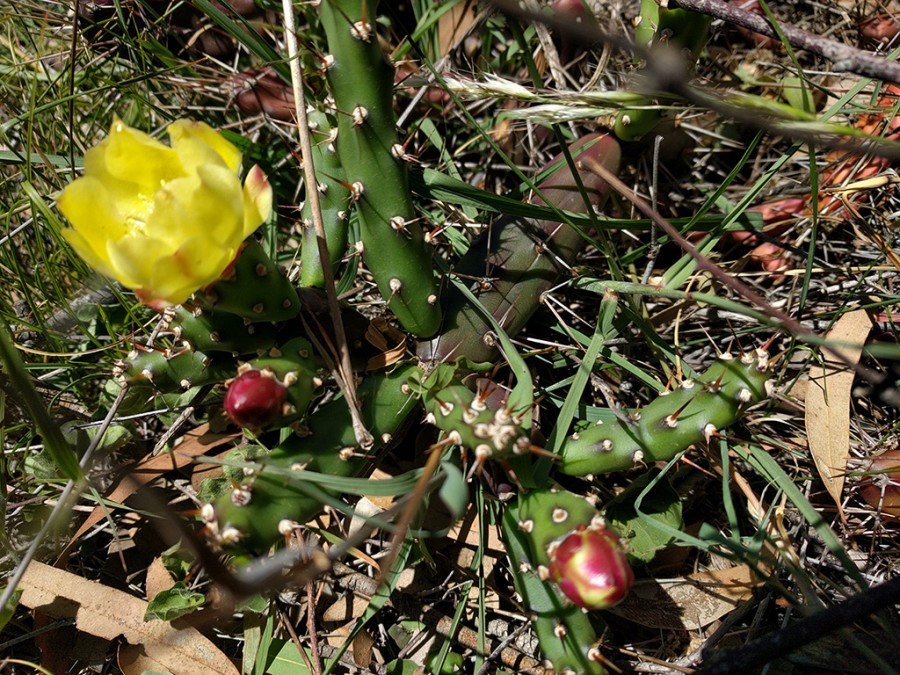Weed Profile - Tiger Pear (Opuntia aurantiaca)
What does it look like?
Tiger pear is a spreading or climbing cactus that rarely grows taller than 40 cm without support. It can grow up to 2 m high by climbing on other plants.
How does this weed affect you?
Tiger pear has sharp, barbed spines up to 5cm long that:
- cause painful injuries to people, livestock, working dogs and pets
- injure and sometimes kill wildlife that get trapped in the spines
- devalue wool and hides and prevent shearing
- get stuck around the mouth of lambs or calves and prevent them from feeding.
Tiger pear forms dense thickets that prevent movement of animals and people. This means that:
- livestock may not be able to access feed
- mustering is difficult
- access to watering points is reduced
- recreational activities such as bushwalking and camping are restricted.
How does it spread?
Tiger pear does not spread by seed. It does produce seeds but they are sterile.
The stem segments of tiger pear detach easily from the main plant. New plants can grow from the fruit or small segments of the plant when they make contact with the soil. The plant parts are spread by:
- attaching to wool or fur on animals
- sticking to footwear or clothing
- attaching to tyres or machinery
- flowing water
- dumping plant material from gardens.
Control
Successful weed control requires follow up after the initial efforts. This means looking for and killing regrowth or new seedlings. Using a combination of control methods is usually more successful.
Chemical control
Herbicides are especially useful for sparse, scattered infestations. Spray actively growing plants. Cover all parts of the plant with herbicide. Check treated plants and control new growth.
Source: NSW WeedWise

